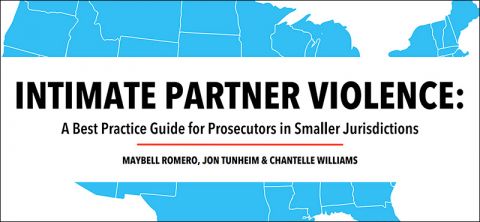Victimization in Rural Communities
Violence and abuse can be physically and psychologically devastating to victims, children, families, and communities. Individuals in rural communities may be reluctant to report abuse in fear they will not be taken seriously, their confidentiality will not be maintained, their reputation may be damaged, or the outcome will lead to continued and more severe abuse.1 In rural America, child abuse and neglect are also frequently underreported due to isolation and geographic remoteness, a lack of social services, a lack of emergency housing, and social stigma for survivors.2 The consequence of non-reporting can be devastating. Findings from the 2019 National Crime Victimization Survey (NCVS) show less than half (41 percent) of violent victimizations were reported to police3 and during that same time period, nationally, 1,840 children died from abuse and neglect.4
The distance to clinics and hospitals combined with a lack of public transportation in rural areas makes access to emergency healthcare difficult, if not impossible. In addition, the limited availability of service providers that can provide care to victims and survivors receive inadequate funding and oftentimes lack resources for specialized staff to help with violence and abuse support.5 According to a report from the U.S. Department of Justice, rates of violent victimization are associated with poverty level, with 38.8 victims per 1,000 persons categorized as poor and rural, compared to 13.3 victims per 1,000 persons categorized as high income and rural.6 In 2018, the poverty rate was more than 9 percentage points higher for nonmetro or rural families headed by females (no spouse present) in general, and more than 10 percentage points higher for those with related children than for the same types of metro, or urban families.7 To further demonstrate the lack of available resources, a 2011 study found over 25 percent of women in small rural and isolated areas live more than 40 miles from the closest intimate partner violence program, compared with less than 1 percent of women living in urban areas.8
Endnotes
1 Rural Health Information Hub. Violence and Abuse in Rural America. Received on May 11th, 2021 https://www.ruralhealthinfo.org/topics/violence-and-abuse.
2 Ibid
3 Bureau of Justice Statistics of the U.S. Department of Justice. (2020) Criminal Victimization, 2019. https://www.bjs.gov/content/pub/pdf/cv19.pdf
4 U.S. Department of Health & Human Services, Administration for Children and Families,
Administration on Children, Youth and Families, Children’s Bureau. (2021). Child
Maltreatment 2019. Available from https://www.acf.hhs.gov/cb/research-data-technology/
statistics-research/child-maltreatment.
5 Rural Health Information Hub. Violence and Abuse in Rural America. Received on May 11th, 2021 https://www.ruralhealthinfo.org/topics/violence-and-abuse
6 Rural Health Information Hub. Violence and Abuse in Rural America. Received on May 11th, 2021 https://www.ruralhealthinfo.org/topics/violence-and-abuse
7 US Department of Agriculture. Rural Poverty and Wellbeing. https://www.ers.usda.gov/topics/rural-economy-population/rural-poverty-well-being/
8 Peek-Asa, C., Wallis, A., Harland, K., Beyer, K., Dickey, P., & Saftlas, A. (2011). Rural disparity in domestic violence prevalence and access to resources. Journal of women's health (2002), 20(11), 1743–1749. https://doi.org/10.1089/jwh.2011.2891


